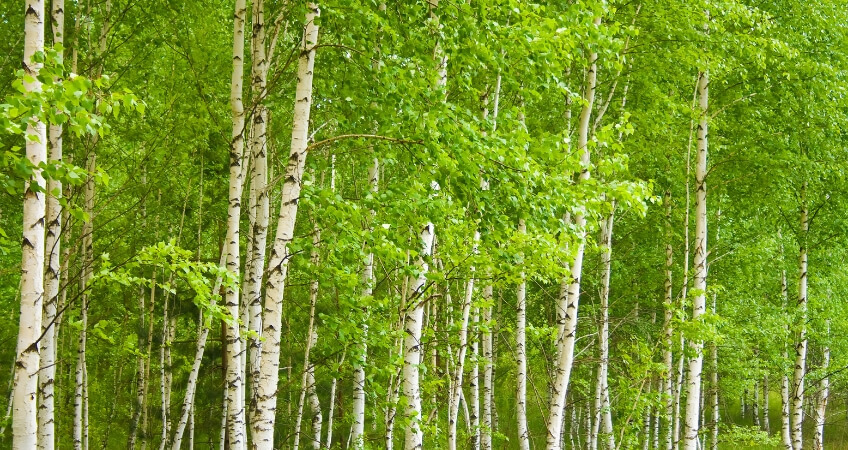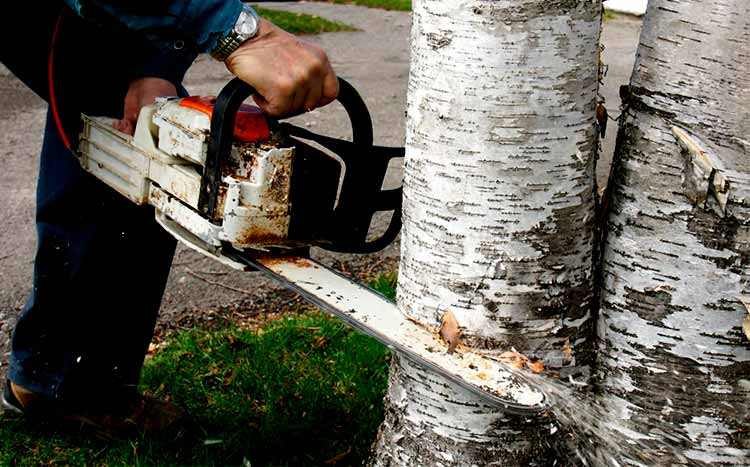Birch trees are loved for their graceful foliage and attractive bark characteristics. You can pick the type of tree that looks best in your yard because they come in many species and varieties. Nonetheless, you need to take the necessary measures to keep them healthy. Besides selecting the right site, watering, mulching, and fertilizing, you are expected to prune birch trees regularly. How can this be achieved? Well, this articles gets into the details.
Birch trees are popular landscape trees, known for their striking white bark and graceful foliage. Proper pruning is important to maintain the health and aesthetics of birch trees. Many homeowners wonder when is the ideal time to prune birch trees. In this article we’ll discuss the factors to consider when timing birch tree pruning.
Why Pruning is Important for Birch Trees
Pruning birch trees provides several benefits:
-
Promotes overall tree health by removing dead, damaged, and crossing branches. This prevents decay and encourages new growth.
-
Maintains an attractive structure by removing unwanted branches and shaping the crown. Birch trees have a natural weeping habit that can be enhanced through pruning.
-
Allows sunlight to penetrate the canopy, which improves air circulation and reduces pest issues.
-
Reduces safety hazards by removing low-hanging branches or weak crotches that could fail.
-
Encourages new growth lower on mature trees to replace aging branches.
Proper pruning improves the aesthetics, health, and safety of birch trees for years to come. Timing is key for effective pruning.
When to Trim Birch Trees
The best time to prune birches is during dormancy in late fall after the leaves drop or in early spring before budbreak. Here’s why:
Fall
Pruning in fall allows you to see the structure of the tree clearly once the leaves are gone. It’s easier to make pruning decisions without foliage in the way. The cooler weather reduces stress on the tree from pruning wounds. Resources have moved down to the roots, so the tree is well-prepared for winter.
Pros:
- Tree is dormant so pruning won’t disrupt growth
- Weather is cool and dry to minimize stress
- Branch structure is clearly visible
- No risk of fungal infections from spring moisture
Cons:
- Hard to distinguish live from dead wood in some species
Early Spring
Pruning in early spring must be timed carefully, before new growth emerges. This takes advantage of mild weather and dormancy without sacrificing the visibility of fall.
Pros:
- Tree is still dormant to minimize stress
- Live branches are easy to distinguish from dead
- Wounds close quickly in mild weather
Cons:
- Short window between dormancy and budbreak
- Cold weather limitations in some zones
Mid/Late Spring
Pruning once leaves emerge is risky. Sap flow is high, so pruning wounds bleed significantly. New growth could be accidentally removed. Weather is often wet, raising disease risks. Pruning delays growth when the tree is metabolically active. Only do light pruning for shaping once leaves are out.
Pros:
- Leaves show exact limb structure
Cons:
- High sap flow from wounds
- Loss of new growth
- Disease risks in wet weather
- Delays seasonal growth
Summer
Avoid pruning birch trees in summer unless absolutely necessary. Hot weather increases stress on the tree from pruning wounds. The tree is metabolically active so pruning inhibits growth and wastes resources. Disease and insect pressure are highest in summer.
Pros:
- Full foliage shows problem areas
Cons:
- Heat stress on tree
- Sap flow from wounds
- Wounds heal slowly
- Risk of disease and insects
- Growth disruption
Tips for Pruning Birch Trees
Follow these tips to safely prune birch trees during dormancy:
-
Never remove more than 25% of the canopy in one season. This stresses the tree.
-
Use sharp, sterile pruning tools to minimize injury. Clean tools between branches or trees.
-
Make pruning cuts just outside the branch collar without leaving stubs. Don’t cut into the branch bark ridge.
-
Remove dense interior branches and competing leaders to improve air flow.
-
Retain an attractive natural shape with weeping lower branches.
-
Eliminate narrow, V-shaped branch forks that are prone to splitting.
-
Remove low branches obstructing walkways or vision over time. Never sudden de-horn mature trees.
-
Hire an ISA Certified Arborist if large limbs require removal or the work is hazardous.
By following proper technique and timing, you can prune birch trees with confidence. Fall is ideal for most pruning work, while early spring can work for light maintenance. Avoid mid to late spring and summer pruning except for minor needs. Schedule regular birch tree pruning to maintain their beauty, health, and safety for many years to come.
Why Pruning Birch Trees Is Important
Pruning is a practice of trimming a tree by cutting off dead and overgrown branches. It is vital because:
- It encourages the growth of a tree. Birch trees can’t grow because of branch and stem death. They take up space and resources, which makes it hard for the healthy roots and branches to grow.
- It helps in treatment of diseases. By cutting away the sick and dying parts of a tree, you can be sure that the disease doesn’t spread to other parts of the tree. It also lets some parts of the tree get some sun, which helps lower the risk of getting the disease.
- You can avoid accidents and incidents. If the braches get too big, the wind can blow them away during storms and rainy days. They might hit your kids in the backyard or even damage your property.
- You can have a better view of your surroundings. When you learn how to trim a river birch tree, you will choose to have a better view of nature.
- It makes your compound look good. Overgrown braches will create undesirable sight in your home. Only by cutting back river birch and other types will you be able to make the area look nice. No matter what, a healthy tree brings life and hope to any place it is.
- It allows for comfortable use of shade. This is possible after cutting off any braches that are close to the ground.

When To Prune Birch Trees
The right time to trim birch trees is determined by the following aspects:
Many people wait for a long time before starting to prune birch trees. However, best results are achieved when you start early. If you don’t trim these trees in time, they can grow so quickly that they can be 90 feet tall and spread out to 60 feet. You will easily shape it, and thus give the look that works for your landscape.
As you think about when to trim birch trees, you’ll notice that they have sap on them in the winter and spring. Given this, you should wait until summer and later spring to trim it. This will help you to avoid an excessive overflow of sap. Most arborists will tell you to identify seasons when the tree is dormant for pruning.
If you see signs of disease on the branches of a birch tree, you shouldn’t wait for a certain time of year to prune it. Start the process immediately and ensure that the saws and other equipments are disinfected. The branches should be cut back to the major limb.
Keep in mind that if you prune the tree at the right time, bugs won’t be able to lay their eggs on it. Most of them depend on the sap for breeding. Additionally, you can cut off the dead branches at any time of the year since sap loss and healing time don’t matter.
Trimming Our Birch Tree! ✂️// Garden Answer
When should birch trees be trimmed?
Trimming mature Birch trees annually between late spring and autumn to remove dead or diseased branches ensures vigorous and healthy growth. Winter trimming results in sap loss so should be avoided. Younger birches should be trimmed a year after planting to help train tree height and spread.
When should you prune a river birch tree?
Season – unlike most trees, you can’t prune Birch trees during their late dormant period (late winter months) because they produce heavy sap flows from pruning wounds. However, an arborist can quickly determine the ideal time of the year to trim your River Birch tree.
Should birch trees be pruned?
You can improve their chances by pruning birch trees properly and taking advantage of the best time to prune birch trees. There are several reasons for cutting back birch trees: Remove dead, diseased, and injured branches for the health of the tree. Branches that rub together offer entry points for insects and disease, so remove one of them.
Why is pruning a birch tree important?
Pruning is a practice of trimming a tree by cutting off dead and overgrown branches. It is vital because: It encourages the growth of a tree. Dead branches and stems stand in the way of birch tree’s growth. They take up the resources and space, making it hard for the healthy braches and roots to thrive. It helps in treatment of diseases.
- The Ultimate Guide to Growing Strawberries in Raised Beds - August 8, 2025
- No-Dig Garden Beds: The Easiest Way to Grow a Beautiful Garden - August 6, 2025
- How to Protect and Preserve Wood for Raised Garden Beds - August 6, 2025

